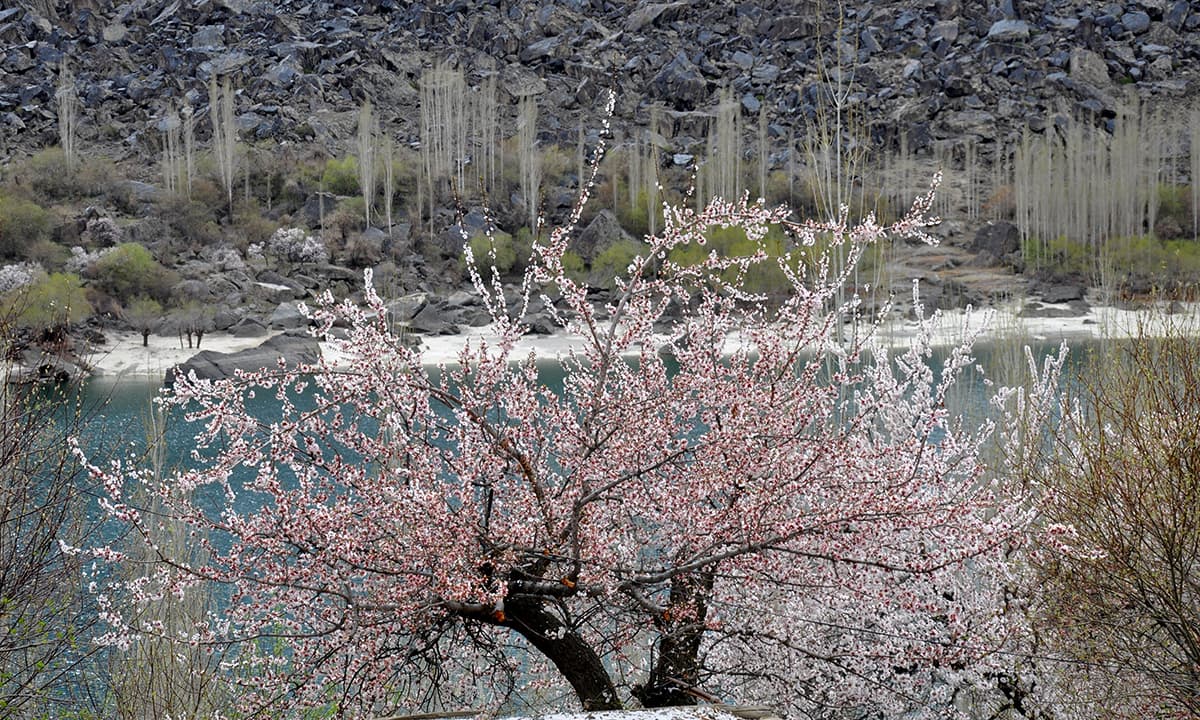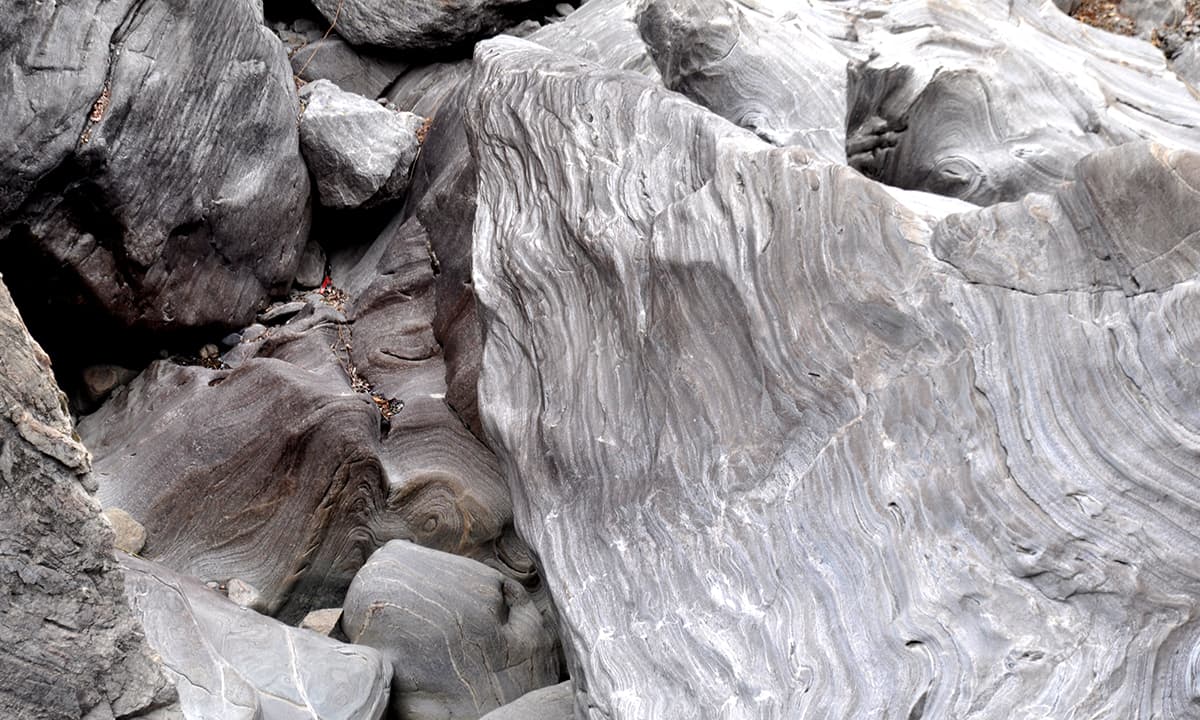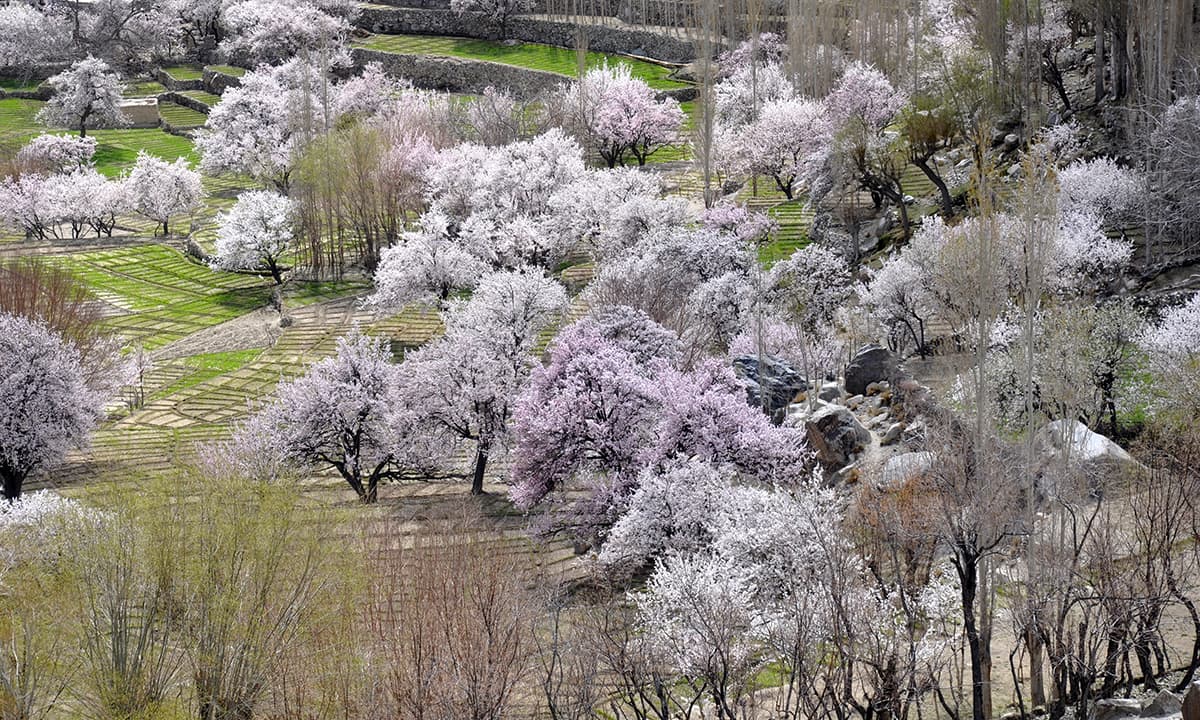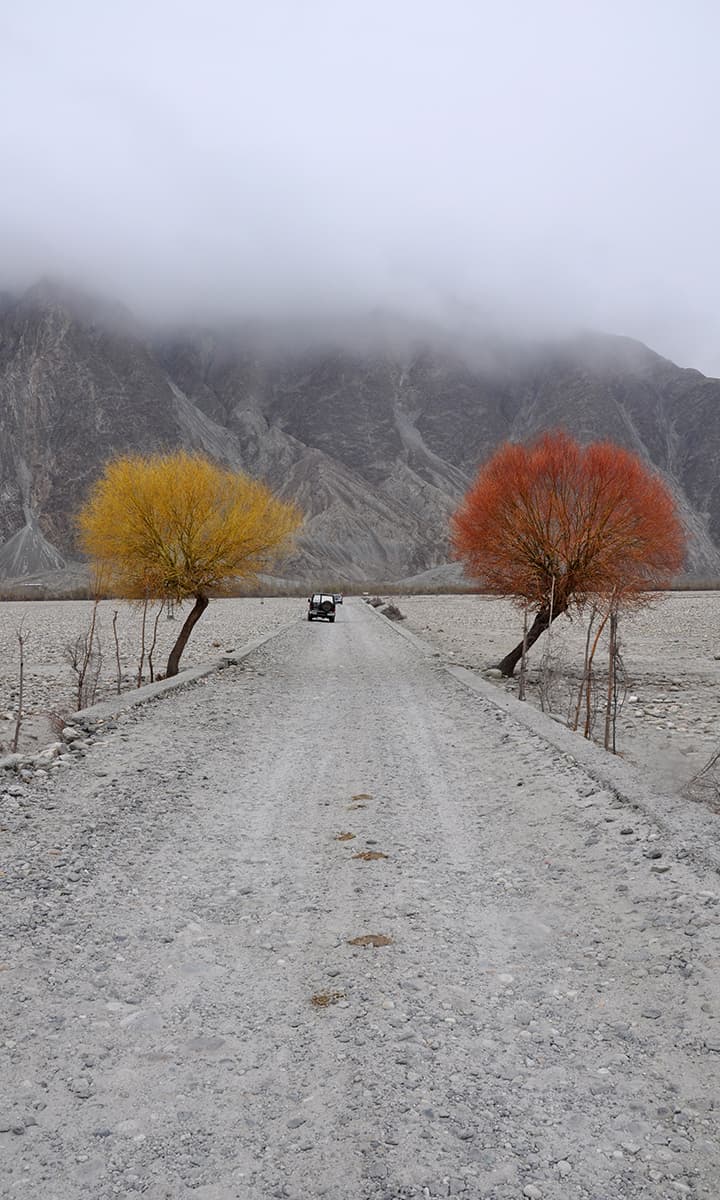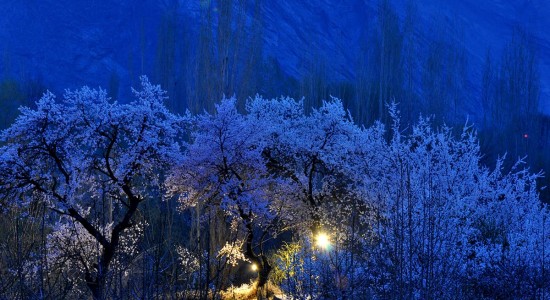
Baltistan the apricot bloom there are times when life presents us with gifts; the best of these are those not sought or expected. To have returned from a visit and not have left is to have started a journey in its true sense. My visit to Baltistan, in northern Pakistan, in April last year was truly such a journey.
I started using the camera just before the snow-covered mountains of the Babusar Pass came into view. The plane was flying directly towards K2 (the world’s second-highest mountain). I feel that no matter how many times one experiences this flight, it never ceases to take one’s breath away. K2 is in front, towering above, Nanga Parbat on the right, at eye level. The plane dropped, banked and dropped, mountains rose, surrounded by a fortress of cliffs protecting the white goliaths — K2 and its companions.
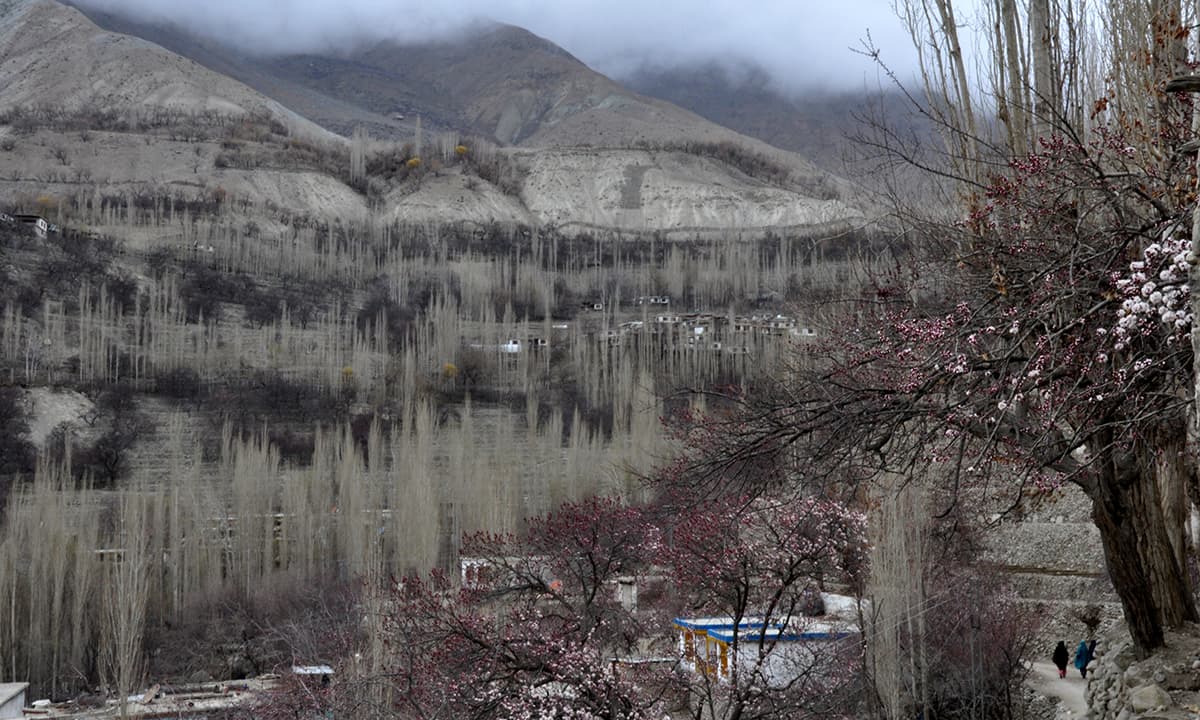
A view of poplar trees in the village of Machlu
We stepped out of the plane in a trough of light beige-grey sand dunes, themselves surrounded by immense, brown, desiccated ridges. I took in a sharp stunned breath; we were in an amphitheatre within an amphitheatre. The sky was crystal clear, an azure blue; there was a hint of clouds. One can only enter or leave Skardu Valley by air when the sky is clear. The remaining five days of our trip were spent under heavy cloud cover.
Fine particles of granite sand, abraded by ice, lined the side of the road and the riverbed. The mountaintops were white. Small glaciers that looked like white ponytails ended at the apex of great triangular forms of sliding sand. At the base were cliffs the size of mountains and rocks the size of houses. The scale was astounding. This was a land of giants. The mountains and the sky dwarfed cities and men. The light here was intense; when the sun shone, the entire valley shimmered. Even the rocks pulsated with light. Quartz in the granite boulders reflected sunlight. That explains something: Skardu means ‘star stone’ in the Balti language.
[caption id="attachment_549" align="aligncenter" width="720"]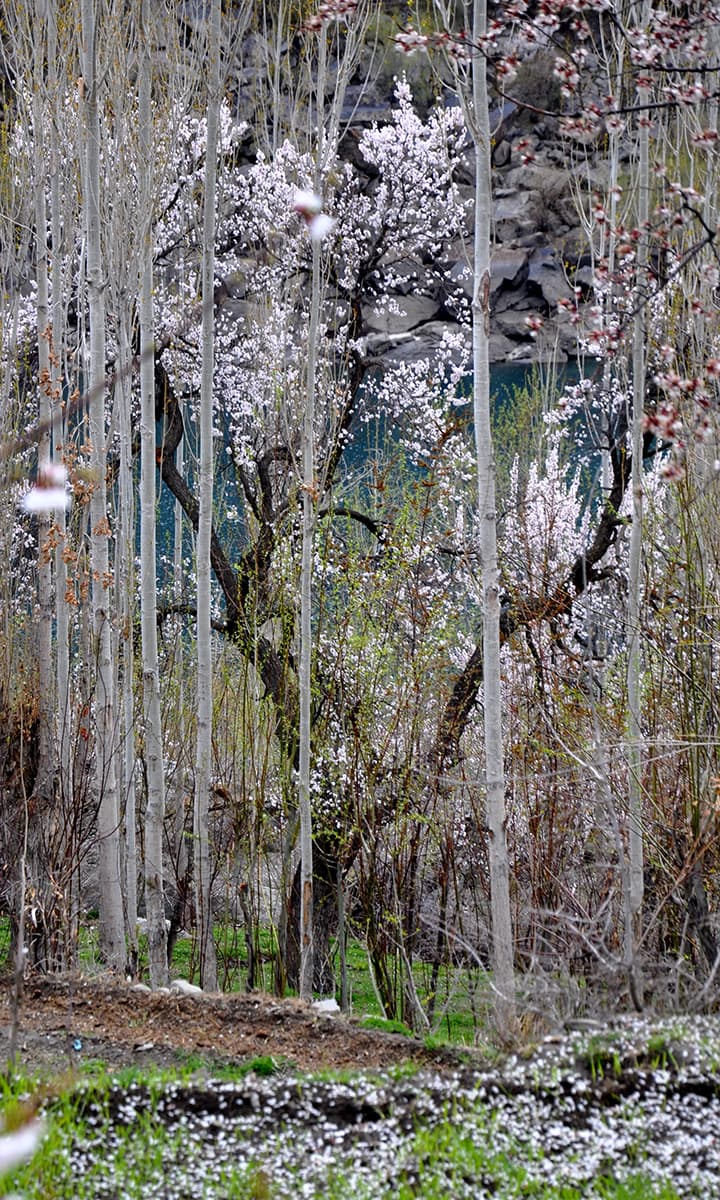 Poplar plantation at the Upper Kachura Lake
Poplar plantation at the Upper Kachura Lake
The riverbed was very wide, composed of fluid lines of grey sand and a meandering trail of turquoise water. It was idyllic and peaceful. Later, when the snow would melt, the riverbed would fill and raging torrents, carrying sediments and minerals, would dominate. Then the river would froth and the colour of water would change to grey.
Where there is water there is life. Melting snow was being channelled to irrigate picture-perfect terraced fields. Sprouts of crops were starting to cover the soil with the freshest of green. The sound of water flowing in streams was gentle and soothing. This is the season when barren trees blossom. The trees were covered with blankets of flowers, all offset against dark sinuous branches and those harsh, barren mountains. The petals were white, pink and cream, translucent with delicate, sensuous veins and textures. The pollen was a yellow ochre, fluorescent even in the dullest of light.
Grandness and serendipity here are felt at all scales. On the way to Saling from Khaplu, between the bed of the Thalle and Shyok rivers, two trees punctuated a jeep track. I will never forget the pull towards them. They seemed to define a portal. One tree was orange, the other yellow. Both were almost without leaves and of the same species. In early spring, I think, they transition from brown through these colours to green, then sprout leaves and wear the same summer cloaks. They intrigue me still and leave me with a desire to learn more.
Poplar trees are a prominent feature of these landscapes. They are used for defining fields, demarcating land and providing fuel. Their leaves had not sprouted, and their upright brush-like branches were a light beige. In many places, they were offset against darker trees and rocks. Viewed from a distance, lines of poplar layered the landscape into horizontal bands. When the breeze moved their branches, it made the mountainsides shimmer. The imagery was dynamic and mesmerising.
The contrast in scale from mountains to pollen, the juxtaposition of desert, barren, shattered, life-taking mountains against life-giving water, lush fields and fruit-bearing trees is beyond description. It has to be seen and then felt. There was gentleness in this symphony of glory, and an immeasurable sense of joy. I have attempted to photograph what I felt, but images alone do not express the beauty that exists in these wonderful valleys of Baltistan.
All photographs are by the author(Tariq Alexander Qaiser)
